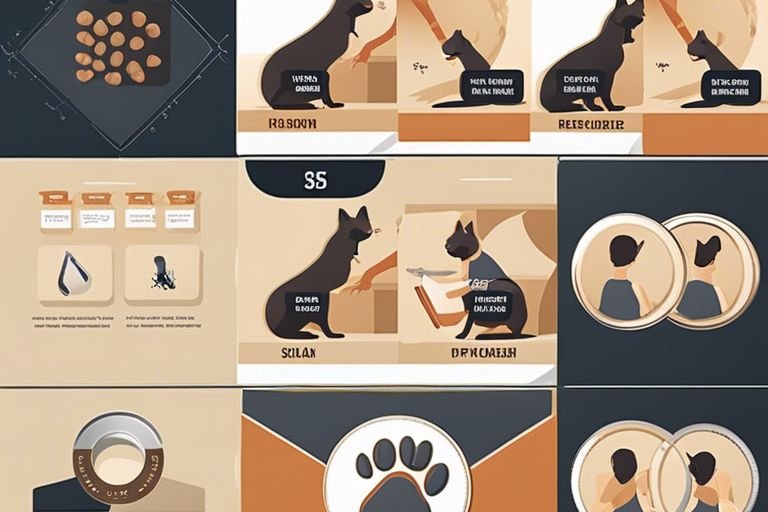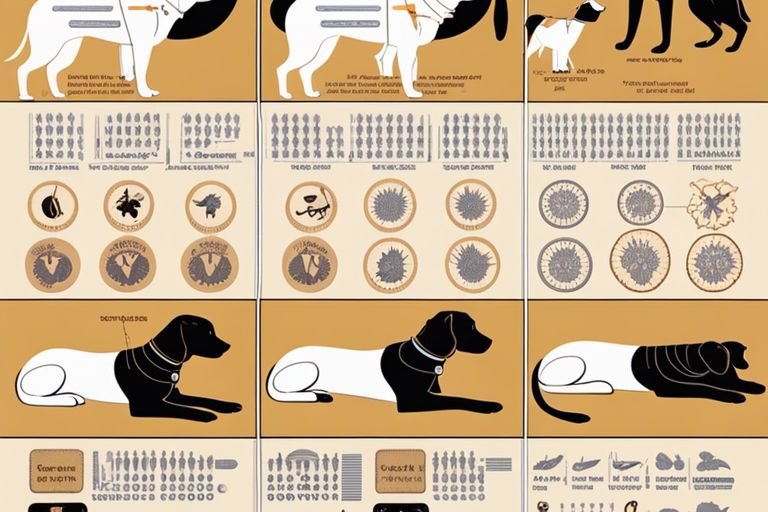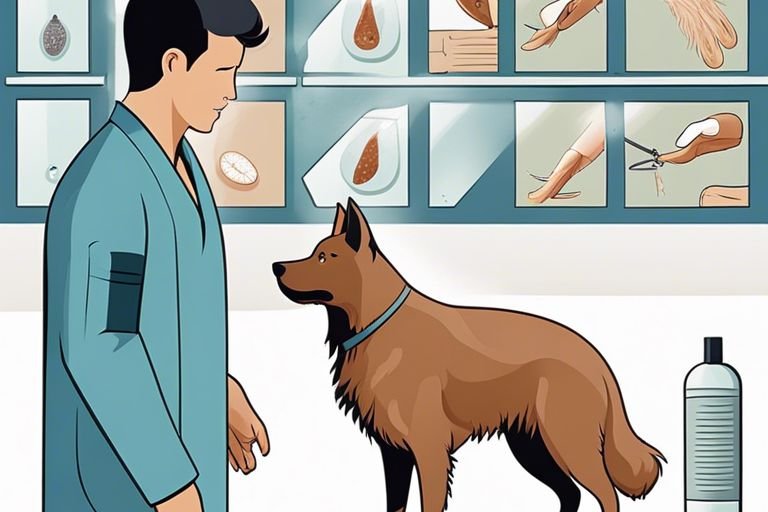Parasites can pose a serious threat to your pet’s health, and it’s essential to be vigilant in checking for them during grooming sessions. While grooming, it’s crucial to be on the lookout for signs of fleas, ticks, and mites that could be hiding in your pet’s fur. These parasites can cause a range of health issues, from skin irritation to more severe conditions such as Lyme disease and anemia. To ensure your pet’s well-being, it’s important to know how to properly check for and remove parasites during grooming. In this blog post, we will provide you with a step-by-step guide on how to effectively inspect your pet for parasites and keep them pest-free.
Key Takeaways:
- Regularly inspect your pet’s fur and skin for any signs of parasites such as fleas, ticks, or mites. This can be done during grooming sessions to ensure early detection.
- Use a fine-toothed comb to carefully comb through your pet’s fur, paying close attention to areas such as behind the ears, between the toes, and around the tail where parasites tend to hide.
- Look for physical evidence of parasites such as tiny black or brown specks (flea dirt), small dark spots on the skin (ticks), or red, inflamed skin patches (indicative of mites).
- Keep an eye out for changes in behavior such as excessive itching, licking, or discomfort, as these could also be signs of a parasitic infestation.
- Consult your veterinarian promptly if you suspect the presence of parasites during grooming, as they can provide appropriate treatment and prevention options for your pet.

Preparing for Grooming
Assuming you are responsible for grooming your dog, it is important to be aware of the potential for internal parasites. These unwelcome guests can affect your pet’s health and well-being, so it’s crucial to take proactive measures to address any potential issues. To learn more about internal parasites in dogs and dog grooming, click here.
Gathering Necessary Tools
Tools such as a flea comb, tick twister, and fine-toothed comb are essential for checking for parasites during grooming. Additionally, having a well-lit area and a pair of gloves can help make the process more effective.
Remember to keep the tools clean and sanitized to prevent the spread of any parasites or diseases. This will help ensure a safe and efficient grooming session for your dog.
Knowing the Signs of Parasite Infestation
An understanding of the common signs of parasite infestation is crucial for effective parasite detection during grooming. Look for symptoms such as excessive scratching, red or irritated skin, and visible parasites or eggs in your dog’s fur.
The earlier you detect and address a parasite infestation, the better the outcome for your pet’s health and well-being. Prompt treatment can prevent potential complications and discomfort for your dog.
Inspection Techniques
Even the most well-groomed pets can be at risk of harboring parasites. To ensure the health and wellness of your furry friend, it is crucial to include parasite inspection as part of your grooming routine. This chapter will outline effective inspection techniques to help you check for parasites during grooming.
Visual Inspection for External Parasites
An essential part of parasite inspection during grooming is visually checking for external parasites such as fleas, ticks, and mites. Begin by systematically inspecting your pet’s fur, starting from the head and working your way down to the tail. Look for any signs of irritation, redness, or small dark specks that could indicate the presence of fleas. Pay close attention to areas where parasites are commonly found, such as behind the ears, around the neck, and between the toes. Use a fine-toothed comb to carefully comb through your pet’s fur, especially in thick or long-haired breeds, to check for any signs of ticks or mites.
Manual Methods and Palpation for Subtle Signs
To ensure a thorough parasite inspection, use your hands to palpate your pet’s skin and coat for any subtle signs of parasites or skin abnormalities. Run your fingers through the fur, feeling for any lumps, bumps, or scabs that could indicate the presence of parasites or skin conditions. Pay attention to your pet’s behavior during grooming, as any signs of discomfort, scratching, or excessive licking may also indicate the presence of parasites. Regularly feeling for any abnormalities and observing your pet’s behavior can help detect parasites at an early stage, allowing for prompt treatment.
Signs of external parasites may not always be obvious, making manual methods and palpation crucial for detecting subtle signs of infestation or skin abnormalities. This hands-on approach to inspection can help identify parasites such as fleas, ticks, and mites, as well as any potential skin conditions that may require attention.
Types of Parasites and Their Indicators
Unlike external parasites, internal parasites are not easily visible during grooming. However, there are still indicators that can suggest their presence. Some common types of parasites and their indicators include:
| Parasite Type | Indicators |
| Fleas | Excessive scratching, redness or inflammation on the skin |
| Ticks | Visible ticks on the skin, unexplained lumps or bumps |
| Mites | Hair loss, scaly skin, excessive licking or chewing |
| Internal parasites | Weight loss, diarrhea, vomiting, lethargy |
Recognizing these indicators early is crucial in preventing serious health issues for your pet. Importantly, always consult a veterinarian for proper diagnosis and treatment if you suspect your pet may have parasites.
Fleas and Flea Dirt
On the surface, fleas and their droppings, known as flea dirt, may appear as small black specks on your pet’s skin or fur. If you notice your pet constantly scratching or biting their skin, it may be an indication of a flea infestation. Flea dirt can also be found on your pet’s bedding or in areas where they spend a lot of time.
Ticks and Tick-borne Diseases
Indicators of ticks include finding the actual ticks on your pet’s skin, especially in areas with less hair. Tick-borne diseases can lead to symptoms such as fever, lethargy, and joint pain in pets. If you live in a tick-prone area or if your pet enjoys spending time outdoors, it’s important to regularly check for ticks after being outside.
The risk of tick-borne diseases such as Lyme disease and Rocky Mountain spotted fever can be minimized by prompt and proper tick removal and consulting with a veterinarian for preventive measures.
Mites and Symptoms of Mange
Tickborne mites can cause symptoms of mange in pets, including hair loss, scaly skin, and excessive scratching. It’s essential to seek veterinary care if you suspect your pet has mange, as some forms of mange can be contagious to other pets or even humans.
To prevent mites and mange, regularly groom your pet and keep their living area clean. Additionally, avoid contact with pets that show symptoms of mange to prevent the spread of the condition.
Internal Parasites and Detection
The presence of internal parasites such as worms can lead to symptoms like weight loss, diarrhea, vomiting, and overall lethargy in pets. It’s essential to regularly deworm your pet and have fecal tests done at your veterinarian’s office to detect and treat any internal parasites.
A proactive approach to internal parasite prevention is crucial for the well-being of your pet. Regularly administer preventive medication as recommended by a veterinarian and maintain good hygiene practices to minimize the risk of internal parasites.

Post-Grooming Measures
For pet owners, the work doesn’t end after grooming your pet. Post-grooming measures are crucial to ensure that your pet remains free of parasites. After grooming, thoroughly clean all grooming tools to prevent the spread of parasites. Additionally, it’s important to regularly wash your pet’s bedding and living area to eliminate any potential parasite eggs or larvae that may have been left behind.
Preventative Treatments
Preventative treatments are essential in protecting your pet from parasites. Utilize preventative treatments such as flea and tick collars, spot-on treatments, or oral medications to prevent parasitic infestations. Regularly consulting with your veterinarian can help you determine the most effective preventative treatments for your pet, based on their specific needs and lifestyle.
When to Consult a Veterinarian
Treatments for parasites should be administered with caution, as improper use of medications can be harmful to your pet. If you notice any signs of parasites on your pet, such as excessive scratching or changes in behavior, it’s crucial to consult a veterinarian immediately. Additionally, if your pet has had previous infestations or health issues, it’s important to seek professional advice to ensure the most effective and safe parasite prevention methods.
With the right preventative measures and regular veterinary check-ups, you can effectively safeguard your pet against parasitic infestations and ensure their overall well-being.
Conclusion
Conclusively, checking for parasites during grooming is an essential part of maintaining your pet’s health and well-being. By regularly inspecting your pet’s fur and skin, you can identify any potential parasites such as fleas, ticks, or mites, and take appropriate action to treat and prevent infestations. By using a fine-toothed comb and inspecting your pet’s skin for any redness, irritation, or unusual lumps, you can ensure that they remain healthy and parasite-free. If you notice any signs of parasites, it is important to consult with a veterinarian to determine the best course of action for treatment.
FAQ
Q: Why is it important to check for parasites during grooming?
A: Checking for parasites during grooming is important because it helps to keep your pet healthy. Parasites such as fleas, ticks, and mites can cause discomfort, skin irritation, and in some cases, transmit diseases. Regularly checking for parasites allows you to identify any issues early and take appropriate action.
Q: How can I check for parasites during grooming?
A: The easiest way to check for parasites during grooming is to thoroughly examine your pet’s fur and skin. Look for signs such as red bumps, scabs, or excessive scratching. Use a fine-toothed comb to part the fur and check for fleas or flea dirt. Ticks can be felt as small bumps on the skin, especially around the ears, neck, and underarms. If you suspect mites, look for hair loss, redness, or crusty skin. Additionally, regularly apply a preventative parasite treatment recommended by your veterinarian.
Q: What should I do if I find parasites during grooming?
A: If you find parasites during grooming, it’s important to take action immediately. Consult with your veterinarian to determine the best course of treatment for your pet. This may involve using topical or oral medications to eliminate the parasites. You should also take steps to clean and disinfect your pet’s bedding and living environment to prevent re-infestation. Additionally, it’s important to continue regular grooming and parasite prevention to keep your pet healthy and parasite-free.
